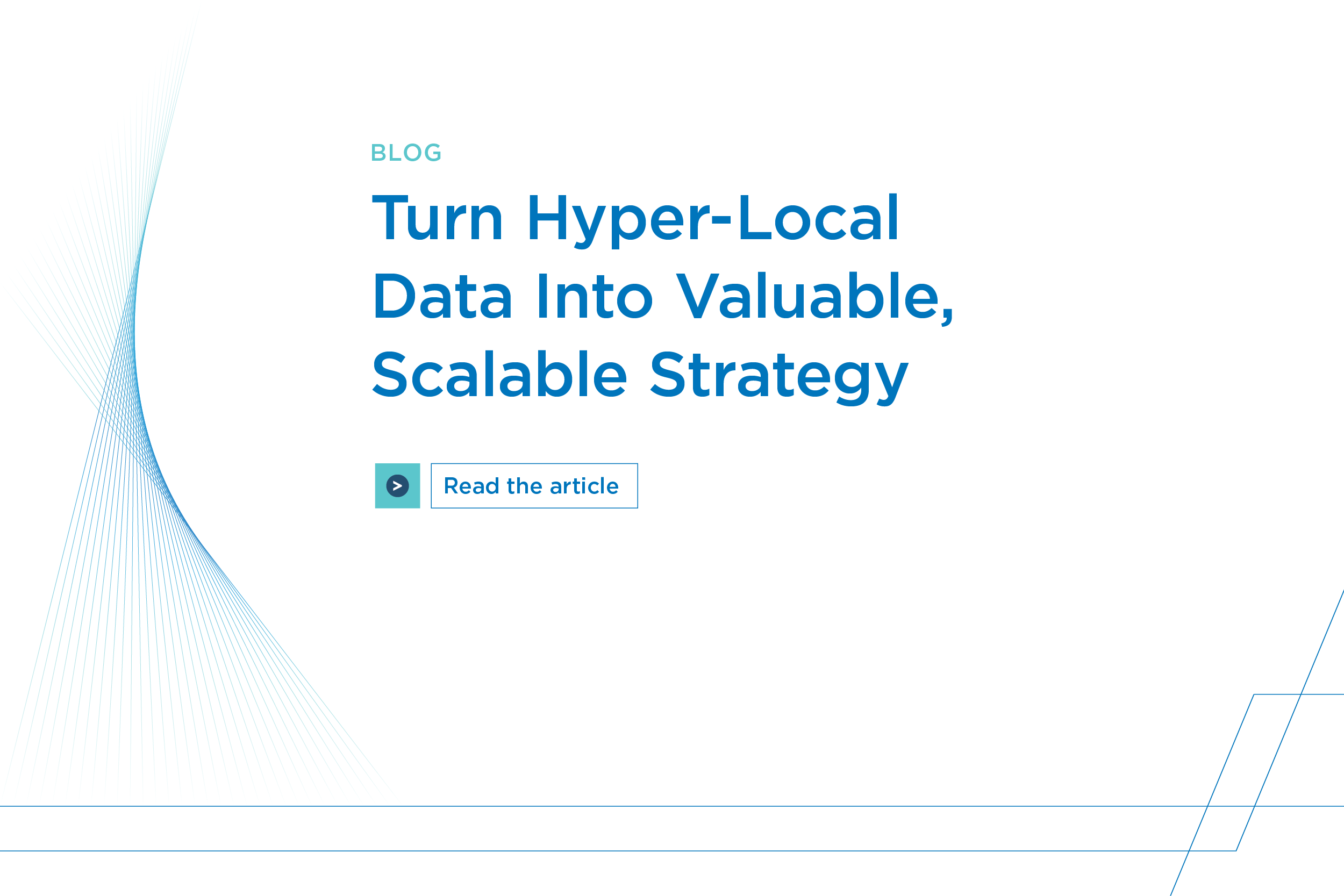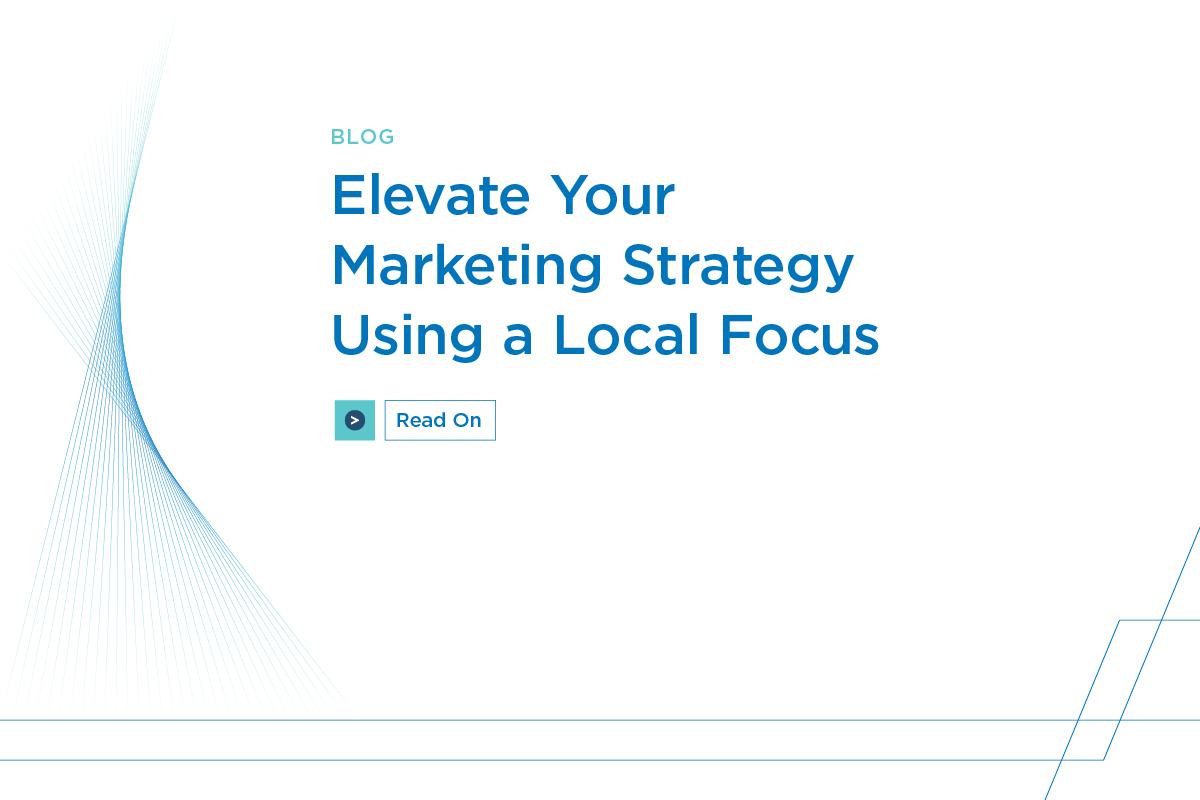With 36% of financial service marketers anticipating flat marketing budgets in 2025 compared to 2024, banks and credit unions must ensure every dollar they spend is strategic and precise. In the coming year, your bank or credit union should be able to answer the following questions:
- How can I drive deposit growth most efficiently and maximize the return on my investment?
- How much should I be allocating to marketing to achieve my growth objectives?
- How effective are my current strategies, and how can they be optimized further?
The Importance of Hyperlocal Personalization
Hyperlocal personalization in banking is essential for customer retention. This advanced marketing strategy leverages third-party data (e.g., credit, HMDA, or census information), artificial intelligence, and machine learning to craft individualized experiences for customers. Hyperlocal personalization goes beyond basic tactics like addressing customers by name; it involves delivering relevant messages and tailored product recommendations based on the customer’s specific needs and geographic location. When marketing resonates with a consumer’s needs and offers solutions, it becomes much more impactful.
According to Forrester Research, 54% of consumers want financial providers to leverage their financial data to personalize their experience. This indicates that consumers are open to hyperlocal personalization, provided it delivers genuine value.
The Relevance Factor
Financial institutions (FIs) that excel at hyperlocal personalization make their target audience feel understood by offering relevant content and financial wellness-focused advertising. Consumers respond favorably to ads that meet their needs; a Vericast study revealed that 20% of consumers recalled a brand after seeing a personalized ad, while 18% found these ads useful and were positively influenced by them.
Furthermore, hyperlocal personalization impacts future behavior. More than 70% of Americans expect advertising messages to be localized and more than 50% of individuals are more likely to purchase from a brand advertising locally, according to research from Locality and The Harris Poll.
However, personalization must be executed thoughtfully. Overwhelming customers with irrelevant or intrusive messages can have negative consequences. In fact, 67% of survey respondents reported seeing irrelevant ads on social media in the past week alone. When personalization is poorly executed, it can lead to confusion, annoyance, and wasted advertising dollars.
Be Transparent About Data Collection and Use
Consumers want FIs that are transparent about what they do with customer data. FIs should clearly communicate what data they collect and how they use it. They should also obtain explicit customer consent before collecting sensitive data.
Maintaining Compliance: An Essential Consideration
As personalized marketing becomes a priority, maintaining compliance must remain central to any bank’s strategy. Financial institutions must ensure that personalization efforts do not inadvertently violate regulations, especially when dealing with protected classes or sensitive data. Building strategies based on grouping methods, such as lookalike audiences, rather than a direct 1:1 approach, can help minimize risks while still extracting valuable insights from customer behavior.
Strategic Use of Data
Possessing data is only the starting point; financial institutions must develop strategic approaches to interpret and leverage it effectively. A comprehensive, layered data strategy can help achieve this by going beyond simple analysis to uncover how different factors drive growth. Such a strategy could involve evaluating historical campaign performance, refining models for future use, and examining customer behavior at various stages of the campaign.
Banks should drill into diverse metrics, including credit utilization, product diversity, and payment history, and compare campaign performance against market peers. This will help create a more informed strategy that aligns with both customer needs and growth objectives.
Partnering for Success
Choosing the right partner is crucial for effective hyperlocal personalization and compliance. Banks must ensure their marketing partners adhere to rigorous compliance protocols and continuously monitor their strategies. Asking about their compliance measures helps mitigate risks and ensures that targeted campaigns align with regulatory standards.
Partnering with a vendor that has deep market intelligence and up-to-date knowledge of regulatory changes can make a significant difference. Such vendors provide data-driven insights that help financial institutions align campaigns with real-time trends and market demands. A marketing calendar should be seen as a growth plan that utilizes key data insights, including consumer demand and realistic growth potential based on market share, while considering product and household share, past performance, and market positioning.
As banks and credit unions navigate the complexities the marketing landscape, investing in hyperlocal personalization and compliance strategies will be essential for success. Partnering with a vendor that offers extensive market intelligence and a proactive approach to regulatory compliance can provide financial institutions with the insights they need to make every marketing dollar count. It’s time to turn data into actionable strategies that drive growth, while ensuring the highest level of compliance and customer satisfaction.
You May Also Be Interested In

Discover how banks and credit unions can leverage hyperlocal marketing strategies to enhance their digital presence and engage with local communities.

Choosing always-on loan marketing solutions is a great way to engage account holders and prospects with compliant, prescreened loan offers.
